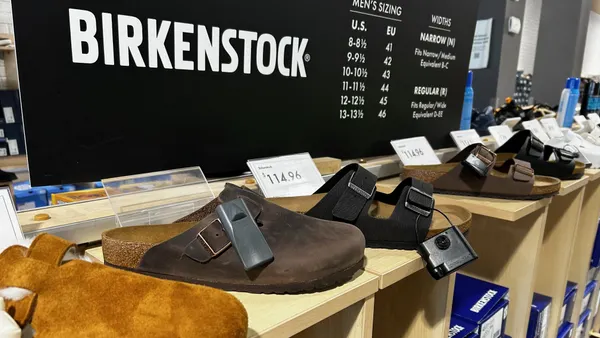Dive Brief:
-
Amazon is hosting a meet-and-greet with merchants in New York on Wednesday, offering 1,5000 attendees a chance to network with each other and Amazon executives and attend workshops about boosting sales worldwide. It's the first such event since the e-commerce giant's founding, Bloomberg reports.
-
The event is seen as a move to court merchants and stand up to competition from rivals Walmart, Alibaba and eBay.
-
As of late last year, Amazon said half of all merchandise sold on its e-commerce platform comes from third-party “sellers, small businesses and entrepreneurs.” As its marketplace has grown, however, many Amazon sellers have complained that its policies are too Draconian and that its communications with them impersonal, according to Bloomberg’s report.
Dive Insight:
Amazon is leaving little to chance as Walmart expands its online assortment, eBay boosts its search and fulfillment capabilities, and retail marketplaces featuring third party sellers proliferate online.
Sellers on Amazon enjoy several advantages. The e-commerce giant's Fulfillment by Amazon program allows marketplace sellers to store and ship goods from Amazon warehouses, while its fledgling Seller Fulfilled Prime program enables larger retailers and manufacturers to ship from their own centers. Amazon takes a cut from third-party sales using its website and fulfillment services.
The Seller Fulfilled Prime program has already made more than 6 million new items available to Prime shipping and services members across the U.S., U.K., France, Germany and Japan, Amazon said. Prime subscribers are privy to the retailer’s free two-day shipping and same-day delivery in some areas, and enjoy those same benefits whenever Seller Fulfilled participants can meet the shipping speed standards.
Sellers have access not only to Amazon’s sticky Prime membership base and other customers, but also to its reputation for good customer service, its logistics infrastructure and the below-market rates it enjoys from United Parcel Service and the U.S. Postal Service. In April, the e-commerce giant announced a self-service subscriptions marketplace, Subscribe with Amazon.
Such sales are also lucrative for Amazon, which doesn’t have to own and (in many cases) fulfill the goods — but as they’ve grown, so have the risks to Amazon's systems and reputation. It's a balancing act that has consistently fallen (when it falls) on the side of the consumer. In addition to its huge product assortment as well as its varied (and growing) Prime perks, Amazon has maintained a reputation for excellent customer service.
That comes at the expense of sellers at times, according to Scot Wingo, founder and executive chairman of e-commerce firm ChannelAdvisor, which works with a range of Amazon Marketplace third-party vendors. “Amazon’s North Star is the consumer, not the seller. If there’s a collision of the two things, they'll choose the consumer,” Wingo told Retail Dive last year. “Everyone talks about the customer, but I’ve never seen anyone walk the walk like Amazon does.”
Seller discontent at Amazon may be becoming more of an issue as Walmart seeks to boost its online assortment, in part through its acquisition of e-commerce marketplace Jet last year and a slew of smaller acquisitions of online retailers since then. Walmart’s online assortment has risen from 10 million to 50 million in about a year, Ravi Jariwala, senior director of public relations at Walmart.com, told Retail Dive. That all still pales compared to Amazon, however, which boasts an assortment of some 260 million products and counting.
While some may be defecting to Walmart, eBay and other online marketplaces, the issues they face on Amazon are likely to emerge elsewhere as well. The marketplace approach introduces responsibilities and risks because it breaks down the traditional buying and distribution opportunities in retail. The shift is to the vendor, which is no longer guaranteed a sale and may have to take on fulfillment costs plus the commission to the marketplace owner.














